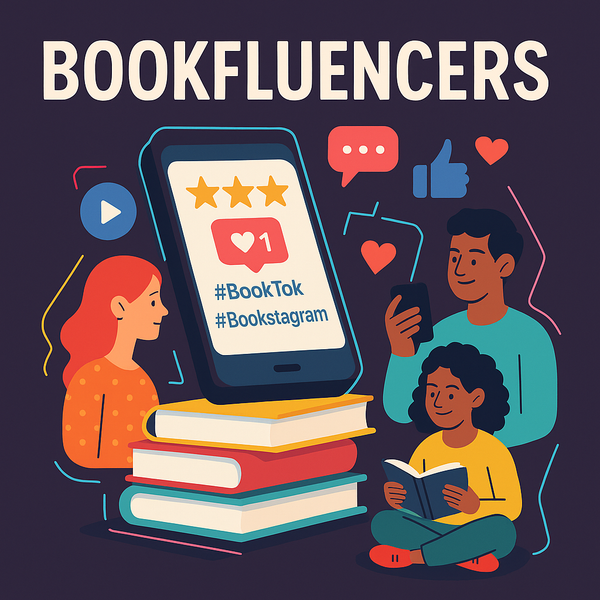Royalties in 2025: Which Platforms Pay Authors Best (and Why Transparency Matters)

You’ve sold a book — but how much do you actually keep?
For many indie authors, the answer is more confusing than it should be. Some platforms promise 70% royalties, but only if you meet hidden conditions. Others take hefty cuts for distribution, printing, or “services” that aren’t always obvious up front. And with subscription models like Kindle Unlimited or Spotify audiobooks, your payout depends on a global pool that shifts every month.
It’s not just about percentages. Authors often don’t know what they’ll actually earn until weeks — or even months — after release. That lack of clarity is one of the biggest frustrations in self-publishing today. As one indie put it bluntly in a community thread: “I can’t plan my career if I don’t know what I’m getting paid”.
In 2025, the royalties landscape is more fragmented than ever. Amazon still dominates, but platforms like Kobo, Apple Books, Wattpad, and Reedsy are competing for attention. Aggregators like Draft2Digital simplify distribution but take their own slice. Subscription services continue to expand, offering exposure at the cost of unpredictable income. Each option comes with trade-offs: higher reach vs. lower margins, convenience vs. control, exclusivity vs. freedom.
So which platform pays authors best? And more importantly — what’s the catch?
In this article, we’ll break down how royalties really work in 2025. We’ll compare the major platforms, highlight the advantages and disadvantages of each, and look at the hidden pain point that matters most: transparency. Finally, we’ll share PubliWrite’s perspective on how royalties can be fairer, clearer, and more empowering for authors.
The State of Royalties in 2025
The way authors are paid hasn’t kept pace with the rapid changes in publishing. On paper, royalty rates in 2025 look attractive — some platforms advertise 70% or even higher for digital sales. But in practice, the real story is more complicated.
Digital dominance, shrinking print margins
Ebooks remain the most straightforward when it comes to royalties: a percentage of list price, minus retailer fees. But even here, conditions apply. On Amazon, for example, you only qualify for the 70% rate if your ebook is priced between $2.99 and $9.99, and delivery fees still apply. Print, meanwhile, continues to be squeezed by rising production and shipping costs, leaving authors with thinner margins even at higher retail prices.
The rise of subscription models
Kindle Unlimited, Scribd, and newer players like Spotify audiobooks are reshaping how readers consume books. For authors, this has created both opportunity and uncertainty. Instead of earning per book sold, you’re often paid per page read or out of a shared revenue pool. That means your income fluctuates month to month, based on factors completely outside your control.
Transparency — or the lack of it
Perhaps the biggest frustration for indie authors today is not the royalty percentage itself, but the lack of clarity around how it’s calculated. Subscription payouts are opaque, reporting is often delayed by weeks or months, and deductions aren’t always clear. The result is unpredictable cash flow and difficulty planning a sustainable writing career.
In short, the royalty conversation in 2025 isn’t just about how much you earn — it’s about how clearly you can see and control your earnings. With that in mind, let’s break down how the major competitors stack up.
Major Competitors: How They Compare
The self-publishing landscape in 2025 is crowded, and each platform comes with its own royalty structure, perks, and pitfalls. Here’s how the major players stack up:
Amazon KDP
- Royalties: 35% or 70%, depending on the ebook price (70% only applies to prices between $2.99 and $9.99; delivery fees apply). Print royalties depend on print costs + distribution. KU payouts vary monthly per page read.
- Pros: Unmatched reach, Kindle Unlimited visibility, and the biggest audience.
- Cons: Exclusivity pressure with KU, unpredictable KU payouts, and high competition.
IngramSpark
- Royalties: Approximately 45% of the list price, after deducting retailer discounts and print costs.
- Pros: Access to bookstores and libraries, hardcover option, professional credibility.
- Cons: High print costs cut into margins, setup fees can be frustrating for some indie publishers, and discoverability still largely depends on author marketing.
Apple Books
- Royalties: Flat 70% across most ebook price points.
- Pros: Transparent and fair, no exclusivity required, premium Apple user base.
- Cons: Smaller market share compared to Amazon; less reach outside the Apple ecosystem.
Kobo Writing Life
- Royalties: 70% on ebooks priced over $2.99; ~45% below that.
- Pros: Strong presence in Canada, the EU, and parts of Asia; supportive of indie authors.
- Cons: Weaker U.S. market presence; discoverability depends heavily on regional marketing.
Draft2Digital / Smashwords
- Royalties: ~60% after retailer’s cut (aggregator takes ~10% of net).
- Pros: Simplifies wide distribution, easy formatting, and multiple store access at once.
- Cons: Middleman means less control, slightly reduced margins compared to direct uploads.
Wattpad (Wattpad Books / Creators Program)
- Royalties/Earnings: Authors can monetise through paid stories, ad revenue share, or publishing deals with Wattpad Books. Payouts vary widely.
- Pros: Massive built-in community (especially YA, romance, fanfiction); great for discovery.
- Cons: Earnings unpredictable; success often tied to viral hits rather than steady sales.
Reedsy Marketplace / Distribution
- Royalties: Not a direct retailer — royalties depend on the distribution partner (Ingram, Draft2Digital, etc.).
- Pros: Professional services marketplace (editing, design, marketing) alongside distribution.
- Cons: High service costs; royalties depend on third-party platforms; less straightforward for authors seeking direct earnings clarity.
Subscription Models (Kindle Unlimited, Scribd, Spotify Audiobooks, etc.)
- Royalties: Per-page read (KU) or revenue-share pool (Scribd, Spotify). Rates fluctuate monthly.
- Pros: Access to vast pools of readers and discoverability through platform algorithms.
- Cons: Extremely opaque, no control over payout rates, unpredictable income.
The Hidden Pain Point: Transparency
When authors discuss royalties, the conversation isn’t just about percentages — it’s about trust. And in 2025, one of the biggest frustrations in self-publishing is the lack of clear, consistent, and timely reporting.
Opaque payouts
On platforms like Kindle Unlimited, Scribd, or Spotify audiobooks, authors aren’t paid a fixed royalty. Instead, their earnings come from a global revenue pool, split by the number of “pages read” or “listens completed.” The problem? The per-page or per-listen rate changes every single month. That means an author can sell or stream the same number of books one month and earn less the next, with no explanation.
Delayed and fragmented reporting
Another issue is timing. While some retailers provide near-real-time dashboards, others delay reporting by weeks or even months. For authors relying on royalties to cover living expenses, this creates serious cash-flow challenges. Worse, authors with books across multiple platforms often find themselves juggling half a dozen dashboards, each with its own reporting quirks.
Hidden deductions
Delivery fees, printing costs, distributor cuts, and retailer discounts can all eat into royalties. These deductions are rarely communicated clearly, leaving authors surprised when their actual payouts don’t match the percentage they expected.
The career planning problem
All of this makes it nearly impossible to forecast income. As one indie author put it in a recent community thread: “I can’t plan my career if I don’t know what I’m getting paid”. Without transparent reporting, even experienced authors struggle to treat writing like a business — because they’re essentially operating in the dark.
PubliWrite’s Perspective
How Royalties Work
PubliWrite is designed to give authors complete transparency and fairness in royalties. Instead of hidden deductions or confusing pools, authors see precisely what they earn — in real time. Sales across formats and distribution channels are tracked in a single dashboard, with royalties automatically calculated after retailer fees (no guessing, no delays). Authors keep a clear, fixed percentage of net sales, without exclusivity requirements.
Pros
- Royalty Calculator (coming soon) → Our homepage tool lets authors calculate potential earnings before they publish — or even before they start writing. This makes PubliWrite the only platform where you can realistically forecast your income in advance.
- Higher royalties across the board → Authors earn 80% on all ebooks and 80% on printed books after production costs — a higher, more straightforward, and more transparent split than the industry standard.
- Royalty splits for coauthors → Collaborating with other writers, editors, or illustrators? PubliWrite allows automatic royalty splitting, so every contributor is paid fairly and transparently without manual tracking.
- Transparent, predictable payouts → No hidden delivery fees or surprise deductions.
- Real-time reporting → See sales and royalties as they happen, instead of waiting weeks or months.
- No exclusivity traps → Publish where you want, when you want.
- All-in-one author tools → From beta reader access to cover creation, everything you need is in one place.
Cons
- Smaller ecosystem (for now) compared to Amazon’s massive reach — but growing with each new author.
- Marketplace visibility depends on community adoption — the more authors and readers join, the stronger the network effect.
- Not a one-click fix for marketing — authors still need to build their audience and brand, though PubliWrite lightens the workload.
Final Thoughts — Why transparency is just as important as percentages
In 2025, royalties are about clarity, predictability, and control. A 70% promise doesn’t mean much if hidden deductions, shifting subscription pools, or delayed reports leave authors in the dark. And for indie writers building a career, that lack of transparency is just as damaging as low payouts.
Every platform comes with trade-offs. Amazon offers reach but at the cost of exclusivity and unpredictable KU rates. IngramSpark gets you into bookstores, but print margins are razor-thin. Kobo and Apple deliver fairness, but not on the same scale. Wattpad and subscriptions create visibility but sacrifice stability.
That’s why authors should look beyond percentages and ask: Will I know exactly what I’m earning, and can I plan a future around it?
At PubliWrite, the answer should always be yes. Transparent splits, real-time dashboards, royalty calculators, and built-in support tools mean authors spend less time guessing and more time writing.
Because at the end of the day, royalties aren’t just numbers on a statement. They’re what turn stories into careers.
👉 What about you? Do you care more about the percentage cut or about the transparency of how it’s calculated? Share your thoughts — I’d love to hear how royalties affect your publishing journey.
Before you go:️️
- Follow us: X | LinkedIn | Instagram | Meta
- Visit our website at https://publiwrite.com





